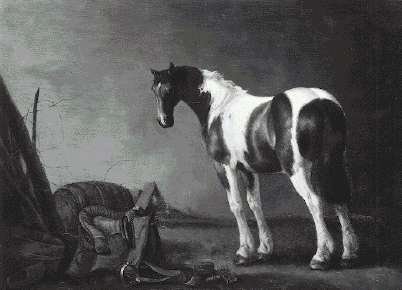|
Making Paintings
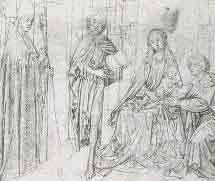
The Magdalen Reading
Reconstruction
Two other fragments of
the lost altarpiece still exist.
The head of St Joseph
fits on top of the National Gallery picture. A 15th-century
drawing shows a composition
which may reflect van der Weyden's original, or part of it.
The drawing does not show
St Catherine. The
window in the background
helps to locate her position.
St John's robe in The
Magdalen Reading fits
exactly onto the edge
of the drawing.
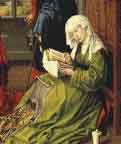
By deduction from the
surviving pieces, the original work is thought to have been about
1 m high by 1.5 m wide. The
background clearly included an extensive landscape view. |
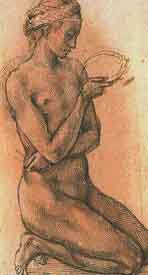 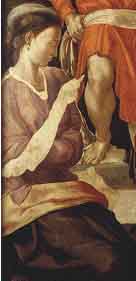
The Entombment
Detail of Mary Magdalene
Kneeling Figures
Kneeling Woman MICHELANGELO
Musée du Louvre, Paris
On the left of The Entombment
the kneeling figure of Mary Magdalene appears to meditate
on something in her
raised hand. This drawing by Michelangelo in
the Louvre is clearly a
preparatory study for this figure and shows her looking
at the crown of thorns,
the nails in her other hand.
The Doni Tondo, painted
perhaps five years later, develops this pose
with an added backwards
twist.
Doni Tondo Detail
of the Virgin Mary MICHELANGELO
Galleria degli Uffizi, Firenze
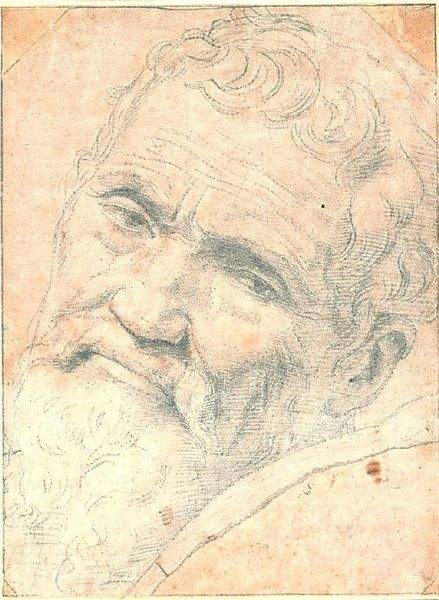 |
Birth name Michelangelo
di Lodovico Buonarroti Simoni
Born March 6, 1475
near Arezzo, in Caprese,
Tuscany
Died February 18, 1564
Field sculpture, painting,
architecture and poetry
Training Apprentice to Domenico
Ghirlandaio
Movement High Renaissance
Michelangelo di Lodovico
Buonarroti Simoni (March 6, 1475 – February 18, 1564), commonly known as
Michelangelo, was an Italian Renaissance painter, sculptor, architect,
poet and engineer. Despite making few forays beyond the arts, his versatility
in the disciplines he took up was of such a high order that he is often
considered a contender for the title of the archetypal Renaissance man,
along with his rival and fellow Italian Leonardo da Vinci.
Michelangelo's output in
every field during his long life was prodigious; when the sheer volume
of correspondence, sketches and reminiscences that survive is also taken
into account, he is the best-documented artist of the 16th century. Two
of his best-known works, the Pietà and the David, were sculpted
in his late twenties to early thirties. Despite his low opinion of painting,
Michelangelo also created two of the most influential fresco paintings
in the history of Western art: the scenes from Genesis on the ceiling and
The Last Judgement on the altar wall of the Sistine Chapel in Rome. Later
in life he designed the dome of St Peter's Basilica in the same city and
revolutionised classical architecture with his invention of the giant order
of pilasters.
Uniquely for a Renaissance
artist, two biographies were published of Michelangelo during his own lifetime.
One of them, by Giorgio Vasari, proposed that he was the pinnacle of all
artistic achievement since the beginning of the Renaissance, a viewpoint
that continued to have currency in art history for centuries. In his lifetime
he was also often called Il Divino ("the divine one"), an appropriate sobriquet
given his intense spirituality. One of the qualities most admired by his
contemporaries was his terribilità, a sense of awe-inspiring grandeur,
and it was the attempts of subsequent artists to imitate Michelangelo's
impassioned and highly personal style that resulted in the next major movement
in Western art after the High Renaissance, Mannerism |
|




